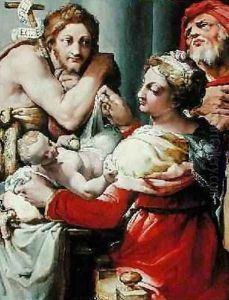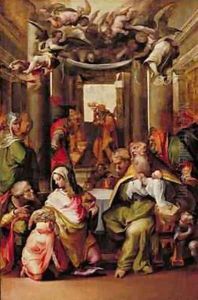(Giovanni Frencesco Bezzi) Nosadella Paintings
Giovanni Francesco Bezzi, known as Il Nosadella, was an Italian painter of the Renaissance period, active primarily in Bologna during the 16th century. Nosadella's exact birth date is not known, but he is believed to have been born around the year 1500. His nickname, 'Nosadella,' is derived from the street in Bologna where he lived and worked.
Not much is known about Nosadella's early life and training. He is thought to have been a pupil of Pellegrino Aretusi and to have been influenced by the work of Parmigianino and other artists active in Parma and Bologna during the time. Nosadella's style is characterized by its Mannerist qualities, which include complex composition, elongated figures, and a sophisticated use of color and light.
Throughout his career, Nosadella worked on several significant projects, including frescoes and altarpieces for various churches in Bologna. His works display a certain dramatic intensity and emotional depth. Among his notable contributions are the frescoes in the Oratory of Santa Cecilia and the church of San Giovanni in Monte. His religious paintings often featured expressive, contorted figures, a hallmark of Mannerist aesthetics.
Unfortunately, many of Nosadella's works have been lost or are in a poor state of preservation, which makes it difficult to fully assess his impact on the art of his time. Despite this, he is recognized for having contributed to the spread of Mannerism in Northern Italy.
Nosadella's death is as uncertain as his birth, but it is generally believed that he died around the year 1571. The lack of detailed records has left many aspects of his life and career shrouded in mystery. Nonetheless, Nosadella remains a significant figure in the study of 16th-century Italian art, particularly in the context of the Bolognese school and the development of Mannerism.

